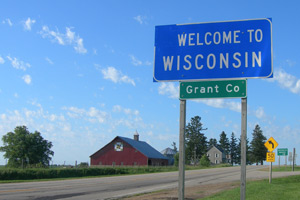Wisconsin Releases First State Freight Plan

“We were able to look at congestion, not just on the highways, but also looking at the impacts of freight on our rail system, our waterways, harbors and airports,” said Donna Brown-Martin, the director for planning and economic development for Wisconsin’s Department of Transportation. “We also made an effort to really look at our local road systems for the last mile impact. That’s extremely important for our stakeholders.
Brown-Martin said the freight plan had been in the works for a year before the passage of the FAST Act. However, she added that WISDOT did tweak some parts of the plan to meet the law’s requirements.
“Freight movement is extremely critical from the standpoint of development, making sure that businesses and industry are able to get their goods in and shipped out of Wisconsin,” Brown-Martin said. “We’re trying to focus on our backbone system and on our interstate and state trunk highway system. There are some areas that need some work, but for the most part, we have a good system. We want to continue to make sure that our system is safe, not only for the traveling public, but that our goods are getting to market and to the manufacturing area safely and efficiently on well-functioning roads.”
Neal Kedzie, president of the Wisconsin Motor Carriers Association, was understandably pleased that WISDOT recognized the importance of freight movement in the Badger State even before the FAST Act required that states come up with freight plans.
“It’s a very good analysis of what the current situation is, the condition of our infrastructure and how we move freight in the state,” Kedzie said. “There’s a large degree of emphasis on intermodal because we’re pretty deficient in that area. We’re pretty much stuck in having to go down to Chicago for almost everything and that is such a congestion point. We really need to see how we remedy moving freight throughout our corridors more efficiently than we are at present.”
Kedzie noted that while WMCA appreciates the department’s recent focus on the state’s major highways such as I-94, other modes have been neglected.
“Chicago has large rail yards and a port so that has had an effect on us, but we really let things slip while Minneapolis has been able to establish itself as a hub [just to the west of Wisconsin],” Kedzie said. “Overall we’re in fairly good shape in Wisconsin. It’s just a matter of not falling behind and that’s where we’re heading right now. Our biggest concern is our bridges. If we have to start putting weight limits on them that could really be a hindrance. The worst ones have been taken care of, but some of the feeders and arterials really need to be replaced.”
As to how to pay for improvements to Wisconsin’s transportation system which has an estimated $500 million shortfall, former state legislator Kedzie said, “Identifying the need and creating somewhat of a sense of urgency as to where [WISDOT] would like to have the system at is good to see. Things are going to have to be done in increments and phased in over time. Hopefully this plan will help the legislators prioritize what really is needed. I’m encouraged by what I’m hearing from the Legislature. This is the best discussion we’ve had about infrastructure in the state of Wisconsin since before I can remember.”

